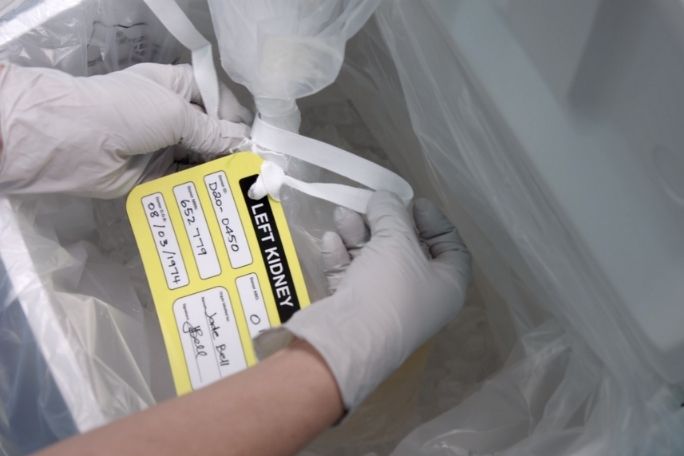Lesson summary
In this lesson, students investigate the way donation and transplantation have developed and improved over time. They consider the careers involved in organ and tissue transplantation and the potential for innovation. Students will conduct supported research to develop presentations for their peers on possibilities for transplantation.
Learning intentions:
Students will...
- understand the careers involved in organ donation and transplantation
- understand the history and potential future of organ transplantation.
Success criteria:
Students can...
- undertake supported research to understand innovations in organ transplantation.
Lesson guides and printables
Curriculum links
Select your curriculum from the options below.
Lesson details
Curriculum mapping
Australian Curriculum content descriptions:
Year 9 Work Studies:
- Investigate a wide range of occupations, and the skills and personal qualities required in these fields (ACWSCL006)
Year 10 Science:
- People use scientific knowledge to evaluate whether they accept claims, explanations or predictions, and advances in science can affect people’s lives, including generating new career opportunities (ACSHE194)
Syllabus outcomes: SC5-13ES
General capabilities: Literacy, Information and Communication Technology (ICT) Capability
Cross-curriculum priority: Sustainability
Relevant parts of 9 Work Studies achievement standards: Students investigate the skills and personal qualities associated with a range of occupations and explain the importance of teamwork and collaboration. They investigate the changes occurring in work, workplaces and work-related relationships and the factors contributing to the changes.
Relevant parts of 10 Science achievement standards: Students construct evidence-based arguments and select appropriate representations and text types to communicate science ideas for specific purposes.
This lesson is part of the wider unit of work DonateLife: Exploring Organ and Tissue Donation – Years 9 & 10
Level of teacher scaffolding: Medium – facilitate student development of presentations.
Resources required
- A device capable of presenting a video to the class
- Careers In Donation And Transplantation Factsheet – one digital or printed copy per student
- Innovations In Transplantation Factsheet – one digital or printed copy per student
- Student devices capable of creating digital presentations
- Student Worksheets – one copy per student
Skills
This lesson is designed to build students’ competencies in the following skills:
- Communication
- Critical thinking
- Digital literacy
- Collaboration
Additional info
This lesson has been created in partnership with DonateLife to get young Australians talking about organ and tissue donation.
Organ, eye and tissue donation saves lives, restores health and improves the quality of life for thousands of Australians each year. But did you know that only 2% of people who die in hospitals each year can be considered for organ donation? One organ donor can save the lives of up to seven people and help many more through eye and tissue donation.


Welcome back!
Don't have an account yet?
Log in with:
Create your free Cool.org account.
Many of our resources are free, with an option to upgrade to Cool+ for premium content.
Already have an account?
Sign up with:
By signing up you accept Cool.org's Terms and Conditions(Opens in new tab) and Privacy Policy(Opens in new tab).